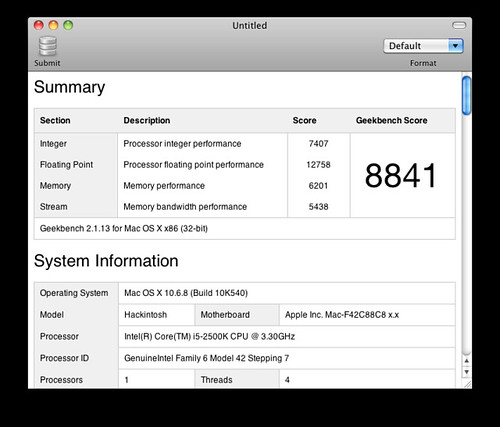- Joined
- Jun 5, 2011
- Messages
- 45
- Motherboard
- customac pro 2011
- CPU
- i7
- Graphics
- hd6670
- Mac
- Classic Mac
- Mobile Phone
Re: Adding ATI card IDs to ATI.c - update (10-May)
I am getting very close now I feel. Unfortunately, I don't have access to windows to check the bios of the Gigabyte AMD Radeon HD 6670 Graphics Card - is anybody able to do that for me?
It's this one here:
http://www.amazon.com/gp/product/B004XV ... cx86com-20
From Sandy Bridge Customac Build 1.
I've tried guessing the Port types & sense id's but no joy as yet.
If someone has access to Windows & GPU-Z software & is able to do this, I'll write out some instructions for the newbies like me to try & save you the hours I've spent on it!
Thanks
GingaNinja said:I started off by getting a rom dump of the graphics card using gpu-z in windows. I then extracted the information of the rom using radeon_bios_decode - which is one of the files mentioned in NoShy's post. This gave me information about the ports on the card:
Code:ATOM BIOS Rom: SubsystemVendorID: 0x174b SubsystemID: 0xe194 IOBaseAddress: 0x0000 Filename: 194X0306.S22 BIOS Bootup Message: TURKS XT C33302 GDDR5 64Mx32 PCI ID: 1002:6758 Connector at index 0 Type [@offset 44276]: DisplayPort (10) Encoder [@offset 44280]: INTERNAL_UNIPHY1 (0x20) i2cid [@offset 44360]: 0x93, OSX senseid: 0x4 Connector at index 1 Type [@offset 44286]: HDMI-A (11) Encoder [@offset 44290]: INTERNAL_UNIPHY2 (0x21) i2cid [@offset 44387]: 0x94, OSX senseid: 0x5 Connector at index 2 Type [@offset 44296]: DVI-I (2) Encoder [@offset 44300]: INTERNAL_UNIPHY (0x1e) i2cid [@offset 44424]: 0x92, OSX senseid: 0x3 Connector at index 3 Type [@offset 44306]: DVI-I (2) Encoder [@offset 44310]: INTERNAL_KLDSCP_DAC1 (0x15) i2cid [@offset 44424]: 0x92, OSX senseid: 0x3
I am getting very close now I feel. Unfortunately, I don't have access to windows to check the bios of the Gigabyte AMD Radeon HD 6670 Graphics Card - is anybody able to do that for me?
It's this one here:
http://www.amazon.com/gp/product/B004XV ... cx86com-20
From Sandy Bridge Customac Build 1.
I've tried guessing the Port types & sense id's but no joy as yet.
If someone has access to Windows & GPU-Z software & is able to do this, I'll write out some instructions for the newbies like me to try & save you the hours I've spent on it!
Thanks

